Gulf Wave Forecasts: Essential Insights for Surfers


Intro
Understanding how Gulf wave forecasts work is crucial for anyone serious about surfing. The waves are not just random occurrences; they are the product of a complex interplay of meteorological changes and oceanic conditions. Gulf regions often face unique climatic factors that can radically influence wave size and quality. In this article, we will dive into the elements that shape these forecasts and how surfers can benefit from them, enhancing their riding experience considerably.
Many surfers tend to underestimate the importance of accurate wave data. However, the truth is, knowing the conditions can mean the difference between an exhilarating day in the water and dealing with flat, unimpressive surf. From the novice surfer catching their first wave to the seasoned pro seeking the perfect barrel, understanding gulf wave forecasts can elevate one’s skill and enjoyment immensely.
Let’s break down the techniques every surfer should familiarize themselves with, which will help them navigate the complexities of surf conditions more successfully.
Preface to Gulf Wave Forecasts
When it comes to enjoying time on the water, understanding gulf wave forecasts is essential for surfers. Gulf waves are unique in their behavior, influenced by various meteorological elements that dictate everything from height to power and frequency. Having a finger on the pulse of these factors can significantly enhance the surfing experience.
Defining Gulf Waves
To truly grasp the essence of gulf wave forecasts, one must first define what constitutes a gulf wave. Gulf waves predominantly form in the Gulf of Mexico, shaped by interactions between wind, water temperature, and geographical features. They rise and fall in a rhythm dictated by the wind patterns and pressure systems above them. These waves can range from gentle swells suitable for beginners to powerful breakers ideal for more seasoned surfers. The character of these waves is usually determined by their swell period, fetch length, and wind speed, giving rise to a diverse array of surfing conditions.
Importance of Wave Forecasts
Accurate wave forecasts are not just numbers and charts; they are the lifeline for any surfer wanting to make the most of their time on a surfboard. Here's why wave forecasts are critical:
- Safety: Knowing wave height and undertow can help surfers avoid dangerous conditions.
- Performance: Forecasts allow surfers to choose the right time and place for surfing, maximizing their chances of catching desirable waves.
- Planning: For enthusiasts planning trips or vacations, understanding wave patterns aids in selecting optimal locations for surfing.
"Good surf isn't just found; it's predicted. Being aware of wave forecasts can turn a mediocre day into an unforgettable one."
For both novice and experienced surfers, being attuned to the patterns and predictions of gulf waves can elevate their performance and enjoyment. When the conditions align just right, the ocean offers a stage where skill meets nature, and that’s something every surfer craves.
Meteorological Influences on Wave Formation
To truly grasp the nuances of surfing in the Gulf, one must first understand how meteorological elements shape wave formation. It’s like trying to make the perfect sandwich without knowing about the role of each ingredient; you simply won't get the best result. The importance lies not only in enjoying the waves but in making informed choices about when and where to surf based on the weather.
Meteorological factors are crucial for predicting wave conditions. Wind patterns, temperature, barometric pressure—these are the heavy hitters in the game of wave forecasting. Understanding them helps surfers avoid pitfalls and maximize their time on the water. Not all winds are created equal, and neither are the systems that generate them.
Wind Patterns and Their Impact
Winds can be likened to the unseen puppeteer behind the curtain of wave creation. When the wind blows across the water’s surface, it transfers energy. The speed and direction of this wind significantly influence both the height and shape of the waves. For instance, persistent onshore winds can create choppy conditions that are less than ideal for surfing. On the other hand, offshore winds can groom the waves, offering solid and clean faces for riding.
Factors to consider regarding wind patterns include:
- Strength of the Wind: Strong winds are more effective at generating bigger swells, but too strong a breeze might create excessive turbulence.
- Duration of Wind: A steady wind over time builds up a consistent wave pattern—this is often why surfers watch forecasts closely.
- Wind Direction: South or southeast winds can result in more favorable wave conditions along the Gulf Coast, while a north wind may reduce wave quality.
A surfer must remain vigilant about local wind conditions. Even a sudden shift in wind can alter the surf scene in a significant way. Taking real-time observations is valuable, allowing surfers to adapt quickly. Websites like surfline.com or magicseaweed.com offer specialized forecasts to help gauge conditions accurately.
Pressure Systems and Wave Height
Pressure systems play a critical, yet often overlooked, role in wave height. High and low-pressure areas affect wind patterns, which in turn, dictate how waves are formed. When a low-pressure system rolls in, it typically brings stronger winds, elevating wave heights. In contrast, high-pressure systems often create calmer conditions that can lead to a flat ocean surface.
It’s essential to pay attention to:
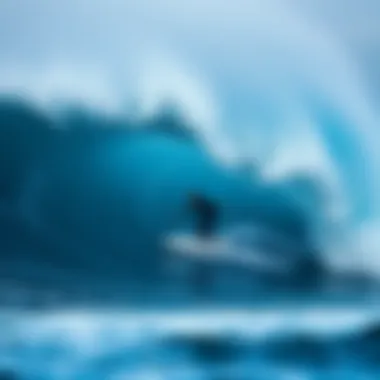
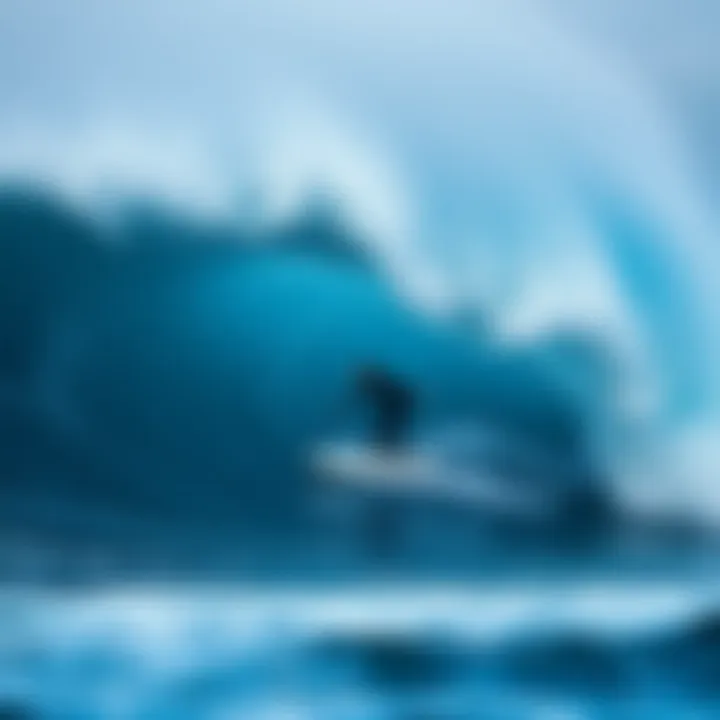
- Development of Low-Pressure Systems: These are often precursors to solid swells. Monitoring weather forecasts for low-pressure activity could mean the difference between flat waters and riding a vintage curl.
- Fast-Moving Systems: These can generate short-lived but intense wave activity. A rapidly moving storm might create powerful surf that is unpredictable in nature, thus requiring surfers to tread carefully.
- Long-Term Pressure Trends: Understanding seasonal patterns, for example, can help predict when to plan for the best surfing opportunities. The annual shifts in weather can offer peak surf times if watched closely.
In summary, the relationship between wind and pressure systems and their impact on wave height cannot be overstated. Knowledge in this area not only enhances the surfing experience but also builds confidence in making informed decisions while out on the water.
"A wave without wind is like a fish without water: it simply doesn’t exist."
For further reading on meteorological factors that affect surfing conditions, check resources like NOAA or National Weather Service for the latest insights.
Key Elements of Wave Forecasting
Every surfer knows that waves can make or break a surfing session. Understanding the key elements of wave forecasting provides a solid foundation for making informed decisions on when and where to surf. In this section, we will discuss three critical components that every surfboard enthusiast should consider: swells, fetch, and wave period. These elements influence not only the appearance of the waves but also the overall surf experience.
Swells: The Building Blocks of Waves
Swells are like the lifeblood of the ocean for surfers. They are long-period waves that travel across the sea surface, forming the visual signatures of surfable conditions. Originating from distant storms, swells can vary greatly in size and frequency, depending on the wind's intensity and duration.
When swell travels, it can undergo various transformations. For instance, as swells approach the shore, the ocean floor's contours significantly affect their breaking patterns. This interaction can create different types of waves, suitable for various skill levels. Surf enthusiasts should pay attention to the swell direction, height, and period. Higher swells generally produce more powerful waves: ideal for advanced surfers looking for a thrilling ride.
Important Considerations for Swells
- Swell Direction: Knowing which direction the swell is coming from helps predict how waves will break. For example, a north swell will behave differently than a south swell on the Gulf Coast.
- Swell Height: As a rule of thumb, the larger the swell, the more advanced the conditions become. Beginners should gravitate toward smaller swells for learning.
- Swell Period: This refers to the time between two consecutive wave crests. Longer periods often indicate more powerful and well-formed waves, providing a better surfing experience.
Fetch and Its Role in Wave Development
Fetch is essentially the stretch of water over which the wind blows, generating waves. The longer the fetch, the more opportunity the wind has to transfer energy to the water, thus creating larger waves. In the Gulf, fetch can be highly variable due to geographical features and coastal configurations.
For example, the expansive fetch along the Gulf Coast allows swells generated by offshore storms to develop strength and size as they travel toward the shore. Without a significant fetch, the opportunities for substantial wave formation diminish, often leaving surfers with choppy and less favorable conditions.
Key Fetch Factors to Keep in Mind
- Wind Direction: Winds blowing directly offshore can enhance wave height; however, side shore winds may disrupt the smooth formation of waves.
- Coastal Topography: The unique layout of the coastline significantly impacts fetch length, influencing the quality of surf that arrives at various spots.
Wave Period and What It Means for Surfing
Wave period, often overlooked by novices, is one of the most crucial aspects of forecasting and experiencing surf. As mentioned earlier, it indicates the time interval between successive waves. Generally, a longer wave period points toward more organized and powerful waves.
Surfers should recognize that short wave periods can lead to choppy conditions, while longer periods often yield smoother rides. For instance, a wave period of 15 seconds may offer surfers a chance to glide more easily between sets, creating a more enjoyable experience. Additionally, wave period can impact paddle-out times; longer periods allow surfers more time to get into position.
Considerations Regarding Wave Period
- Paddle Difficulty: Longer periods can provide a better rhythm for paddling out, while shorter intervals may mean more time spent navigating through breaking waves.
- Timing and Positioning: Understanding wave period is helpful in timing the take-off, ensuring surfers catch the waves at their peak.
Understanding wave forecasts and key elements is key for surfers looking to optimize their time in the water.
For further information, check these helpful resources: Wikipedia - Ocean Waves, NOAA - National Weather Service.
Analyzing Gulf Wave Data
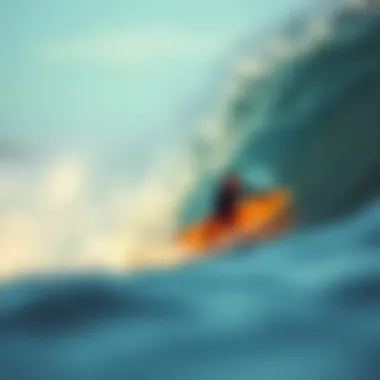
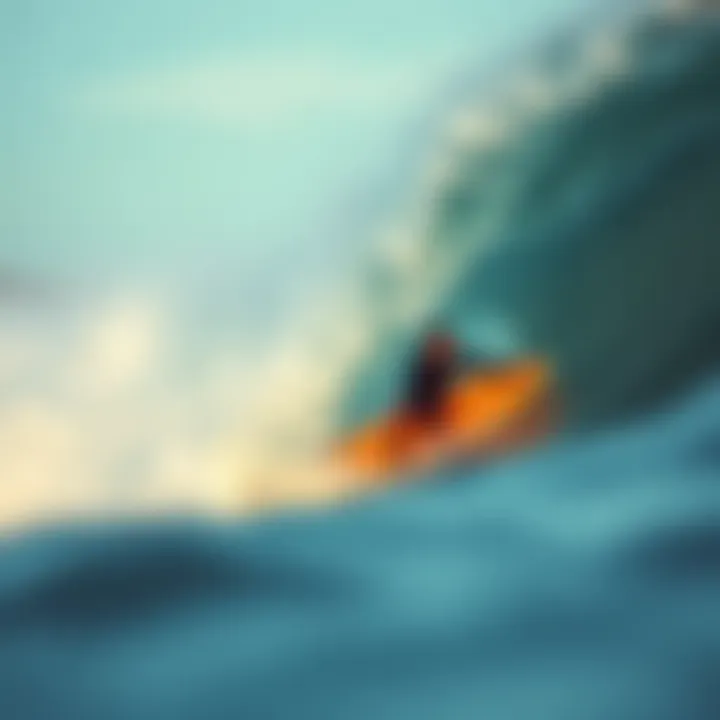
Gulf wave data is a treasure trove for surfers looking to catch the best swells. Understanding this data isn't just about numbers; it's about interpreting the whole picture of the ocean's pulse. Knowledge in this area can greatly enhance your surfing experience. The value of this kind of analysis stems from the ability to make more informed decisions, whether you're planning to paddle out for your daily session or embarking on that long-awaited surf trip.
Using Surf Forecast Websites
Surf forecast websites have become essential tools for surfers at all levels. These platforms consolidate information from various sources, translating complex meteorological data into user-friendly forecasts that guide surfers toward optimal conditions. The beauty of these websites lies in their ability to package detailed information into digestible summaries.
Here are some key points regarding the use of these sites:
- Real-Time Updates: Much like a lighthouse guiding ships to safety, these websites offer real-time updates on wave heights, wind speeds, and tide conditions. Keeping an eye on these fluctuations can significantly impact your day's surfing conditions.
- User-Friendly Interfaces: Most sites sport intuitive designs, allowing easy navigation through forecasts of different regions, thus enabling surfers to zip through data quickly.
- Alerts and Notifications: Many platforms offer mobile alerts when conditions become ideal. This can help ensure you’re always ready to hit the surf when the time is right.
Incorporating these resources into your routine can mean the difference between a day of flat waves and an exhilarating surf session.
Interpreting Wave Charts and Graphs
Diving into wave charts and graphs can seem daunting at first, but they provide invaluable insights into the ocean's dynamics. Knowing how to read these can be a game-changer for surfers.
Here’s what you should look for:
- Wave Height: This is usually represented in feet. Understanding how wave heights correlate with your skill level is essential. Shorter, more manageable waves might suit beginners, while taller, more powerful swells are often best left for seasoned surfers.
- Wave Period: Often shown in seconds, wave period refers to the time it takes for consecutive waves to pass a fixed point. A longer wave period usually indicates more powerful and well-formed waves.
- Direction and Swell Orientation: These elements reveal where the best waves are coming from and help you identify which spots will be best on any given day. Knowing the direction can save you from chasing after waves that don't match up with local breaks.
A wave chart might have information like: - Swell Height: 5ft
- Wave Period: 10s
- Wave Direction: NW
Reading this correctly allows you to be strategic about which breaks will deliver the best conditions.
By understanding these charts and graphs, you arm yourself with crucial data that can greatly improve both your safety and your enjoyment out on the waves. The ocean's moods can change swiftly; being prepared makes all the difference.
In sum, whether you're checking your favorite surf forecast website or grappling with graphs and charts, the insights gained from analyzing gulf wave data allows surfers to navigate the waters with confidence and skill. Taking a moment to analyze such information can transform an ordinary surf day into an extraordinary one.
Regional Characteristics of Gulf Surfing
Understanding the unique characteristics of surfing in the Gulf region is crucial for enthusiasts and seasoned surfers alike. The variety in wave conditions, environmental factors, and seasonal shifts greatly influence not only the quality of surfing but also the overall experience. Being aware of these factors can enhance one’s ability to select the ideal times and locations for surfing, ultimately leading to a more enjoyable outing on the water.
Understanding the Gulf Coast Environment
The Gulf Coast environment is a tapestry of subtropical climates and diverse ecosystems. The warm waters of the Gulf of Mexico play a significant role in shaping the coastal surf conditions. Sharks and schools of fish are as regular as the surfers, attracting a lively underwater scene.
- Tides and Currents: The Gulf experiences semi-diurnal tides, which means there are generally two high and two low tides each day. These tidal changes can significantly affect wave conditions. For surfers, understanding the timing of these tides can be the difference between a mediocre session and one filled with exhilarating waves.
- Erosion and Sandbars: Coastal erosion and the natural shifting of sandbars can also alter surf conditions. Sometimes a beach that was perfect last week might not be so accommodating today. Regular visitors to a beach often keep an eye on these changes to anticipate optimal surfing conditions.
- Water Temperature and Clarity: The Gulf waters are notably warm, especially during the summer months, which can lead to ideal conditions for longer surfing sessions. However, clear water is not always guaranteed, and visibility can be a challenge during algal blooms that can sometimes occur.
Seasonal Variations Impacting Surfing Conditions
Surfing in the Gulf changes with the seasons, presenting unique challenges and conditions throughout the year. Each season has its distinct characteristics that can either attract surfers or deter them based on their skill level and preferences.
- Winter: Surprisingly, winter can be a hidden gem for surf enthusiasts. Surfers often see less crowded beaches and can catch larger swells generated by colder fronts sweeping across the Gulf. Wind conditions during this season can also bring about favorable wave shapes.
- Spring: As temperatures rise, so does the surfer population. Spring marks the onset of warmer waters and the beginning of the hurricane season, which can produce exceptional surf during early storms. It’s a prime time for those looking to nail some impressive rides before the summer rush hits.
- Summer: The Gulf can be a double-edged sword in the summer. While warm waters draw newbies to the beaches, the small swells often leave seasoned surfers seeking larger waves. However, occasional tropical storms and hurricanes can provoke unexpected large swells that are a dream for those chasing adrenaline breakthroughs.
- Fall: As summer fades, it’s often considered the best time for experienced surfers. The fall brings larger and more consistent swells driven by passing cold fronts. The less humid air combined with favorable winds can lead to pristine conditions for riding waves.
The Gulf Coast’s unique environment and seasonal changes significantly impact surfing conditions, making surf forecasts even more essential for enthusiasts.
For surfers, recognizing and mastering the regional characteristics of Gulf surfing can lead to not just improved performance but also a deeper connection to the ever-changing nature of the sea. Constantly adapting to these elements fosters a more profound respect for the sport and the environment.
Practical Applications of Wave Forecasting
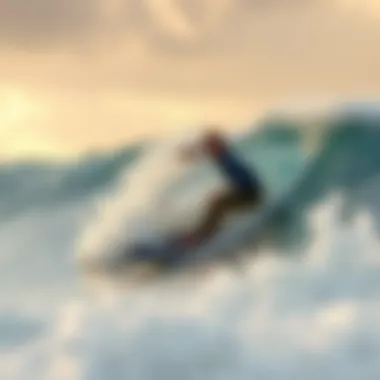
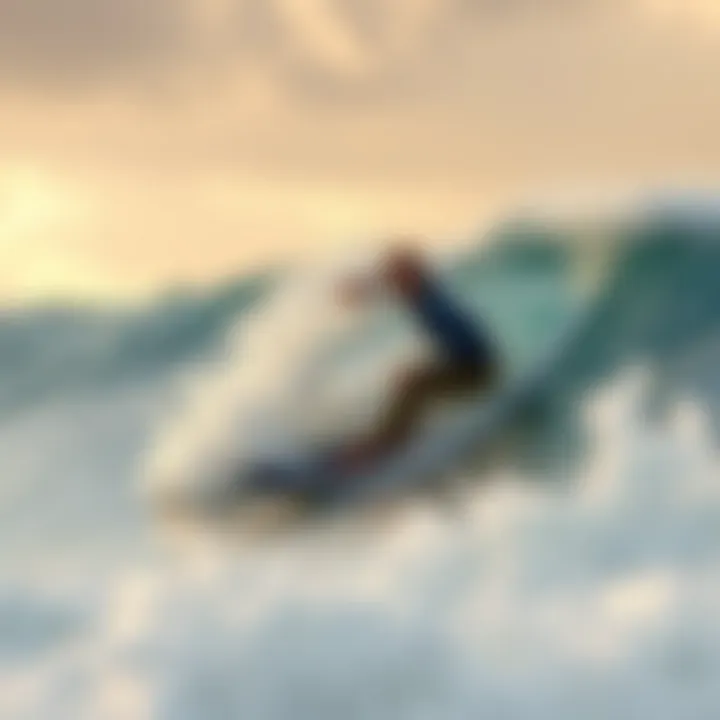
Wave forecasting is not just a fancy compass pointing surfers to the right conditions; it’s truly the backbone of any successful surf adventure. When hashed out, practical applications of these forecasts showcase their value in the realms of trip planning and crucial safety measures. Obtaining accurate wave data gives surfers a significant edge—navigating through time-sensitive forecasts allows for maximizing ride potential while mitigating risks.
Planning Surf Trips
Planning a surf trip without considering wave forecasts is like trying to bake a cake without a recipe—it may be exciting, but often ends in disappointment. Surf forecasts offer more than just daily wave heights. Factors like wave direction, period, and local weather conditions all intermingle to create the perfect surf day. Here’s how you can harness these forecasts for trip planning:
- Choose the Right Time:
Knowing the optimal conditions means you can hit the waves when they’re at their juiciest. Check forecasts not just for the day but also for patterns that unfold in the coming week. Light winds and a good swell can turn an average beach day into a surfing paradise. - Select the Best Spots:
Not all beaches are created equal, especially when filtering in the swell directions. A little research, boosted by accurate forecasts, can help pinpoint which local surf breaks will best suit the coming swells, keeping you away from crowded, lesser breaks. - Plan for Seasonal Changes:
Many Gulf beaches have varying surf conditions throughout the year. Being aware of seasonal patterns in wave height and trends lets you stock up your surfboard quiver with the right boards that can handle what Mother Nature throws your way.
In short, successful trip planning hinges on how well surfers tap into the forecasting nuances, ensuring that every session is one for the books.
Safety Considerations for Surfers
Surfing is an exhilarating sport, but it comes with its fair share of risks. Wave forecasting plays a crucial role in ensuring that surfers not only get the ultimate ride but also stay safe. Here’s how to leverage forecasts for safer surfing:
- Understand Wave Height and Conditions:
Staying informed about wave heights helps surfers gauge their skill level against the ocean's temperament. More experienced surfers might revel in bigger swells, but for the less seasoned, understanding what’s too rough can make all the difference. - Weather Influences:
Sudden storm changes can create hazardous conditions. Keeping an eye on weather forecasts alongside wave predictions allows surfers to anticipate potential hazards like riptides, strong currents, or even thunderstorms. As the saying goes, "better safe than sorry." - Time Your Sessions:
With the flux of tidal movements, wave forecasts provide key insights into when to paddle out. Timing your surf sessions to align with favorable tides can mean the difference between a smooth ride and a wipeout into rocky shores. - Buddy Up and Communicate:
Sharing wave forecast findings with fellow surfers reinforces a safety net. The more informed the crew is about changing conditions, the safer the group will be out there.
In the ever-changing dynamics of surf conditions, taking advantage of accurate wave forecasts isn't just smart—it's downright essential. Harnessing this information can keep things thrilling while keeping risks at bay.
Technological Advances in Surf Forecasting
The realm of surf forecasting has beautifully melded with advancements in technology, transforming how surfers gauge wave conditions. As any seasoned surfer knows, knowing when and where to catch the perfect wave can often be the difference between a perfect session and a disappointing day. Technological innovations have been the backbone of this pursuit, providing tools and resources that can enhance surfing experiences.
Satellite Technology and Its Influence
Satellite technology serves as a cornerstone in modern wave forecasting. These orbiting sentinels in the sky gather data crucial for predicting wave patterns and oceanic conditions. For instance, they monitor sea surface temperatures, wind speeds, and current flows across vast areas of ocean, providing surfers with a clearer picture of what to expect.
- Remote Sensing: With remote sensing, valuable insights can be gleaned from satellite imagery. It allows forecasters to analyze changes in wave formations and the movement of swells before they reach the coast.
- Data Prediction Models: Satellite data feeds into sophisticated models that predict waves from European coasts to the Gulf of Mexico. These models can forecast wave height, period, and direction, which are critical factors for surfers keen on riding the best conditions.
One intriguing example is how satellites equipped with synthetic aperture radar capture high-resolution images of waves. These images can help to track specific swell events in real time, enabling local surf shops and communities to inform surfers immediately when optimal conditions arise. As such, satellite technology not only enhances the precision of forecasts but also builds a sense of community among surfers eager to connect with good surf.
Mobile Applications for Real-Time Updates
In tandem with satellite technology, mobile applications have revolutionized how surfers access wave data. Gone are the days when one had to wait for the evening news or check outdated bulletin boards. Today, mobile apps put the power of wave forecasting right in the palm of your hand.
- Real-Time Notifications: Many of these applications provide real-time updates on wave conditions, tide schedules, and wind patterns. By allowing surfers to fine-tune their schedules, apps increase the chances of finding favorable conditions.
- User-Generated Reports: Some apps encourage surfers to share their experiences and conditions, creating a communal database that can enhance forecasts even further. This firsthand data can be incredibly useful, providing local insights on shifts in conditions that might not yet be reflected in broader forecasts.
- Popular Mobile Apps: Apps like Surfline or Magicseaweed offer extensive forecast data, so surfers can plan trips with confidence. They include videos and live cams showing real-time surf conditions, making it easier for surfers to gauge perfect wave height and the overall atmosphere of the beach.
Ultimately, these innovations in technology are not merely conveniences; they fundamentally change the dynamics of the surfing community. While surfing has always relied on instinct and experience, technological advances now provide crucial data that empower surfers to make informed decisions. As the tech continues to evolve, one can only anticipate that forecasting tools will become even more sophisticated, making it exciting for both seasoned surfers and newcomers alike to chase the perfect wave.
End and Future Directions
As we wrap up our exploration into the world of gulf wave forecasts, it is clear that understanding these phenomena is essential for surfboarding enthusiasts who wish to harness the waves effectively. The convergence of meteorology, technology, and personal experience creates a potent mix that shapes the surfer's experience. With advancements in forecasting methods and tools, surfers are better equipped than ever to make informed decisions about when and where to catch the best waves.
The Evolution of Forecasting Methods
Historically, wave forecasting relied heavily on rudimentary observations and anecdotal evidence. However, we are witnessing a significant transformation thanks to advancements in technology. Today, meteorologists employ complex algorithms and sophisticated modeling techniques to predict wave behavior more accurately. For instance, numerical weather prediction models assimilate vast amounts of meteorological data to provide real-time updates on wave conditions.
"The future of wave forecasting lies in continuous learning and adaptation, leveraging past data to refine predictive models."
Most surfers now access forecasts through websites and mobile apps that present detailed wave data, including height, period, and direction. This kind of information used to be available only to professionals or researchers, but it has now trickled down to the keen surfer, establishing an atmosphere of openness and community around surfing.
Encouraging New Research in Wave Dynamics
While strides have been made, the need for ongoing research remains paramount. Waves are influenced by a multitude of factors, some of which are still not fully understood. For instance, climate change introduces new variables that affect ocean currents and weather patterns, ultimately impacting wave dynamics. Encouraging research in this area can lead to a heightened understanding of how these changes will influence surfing conditions over time.
Support for studies and collaborations with universities and research institutions can yield valuable insights into topics like oceanic processes and surf forecasting accuracy. Furthermore, encouraging citizen science—where surfers contribute their observations—could enhance the data pool available for researchers and forecasters alike.







